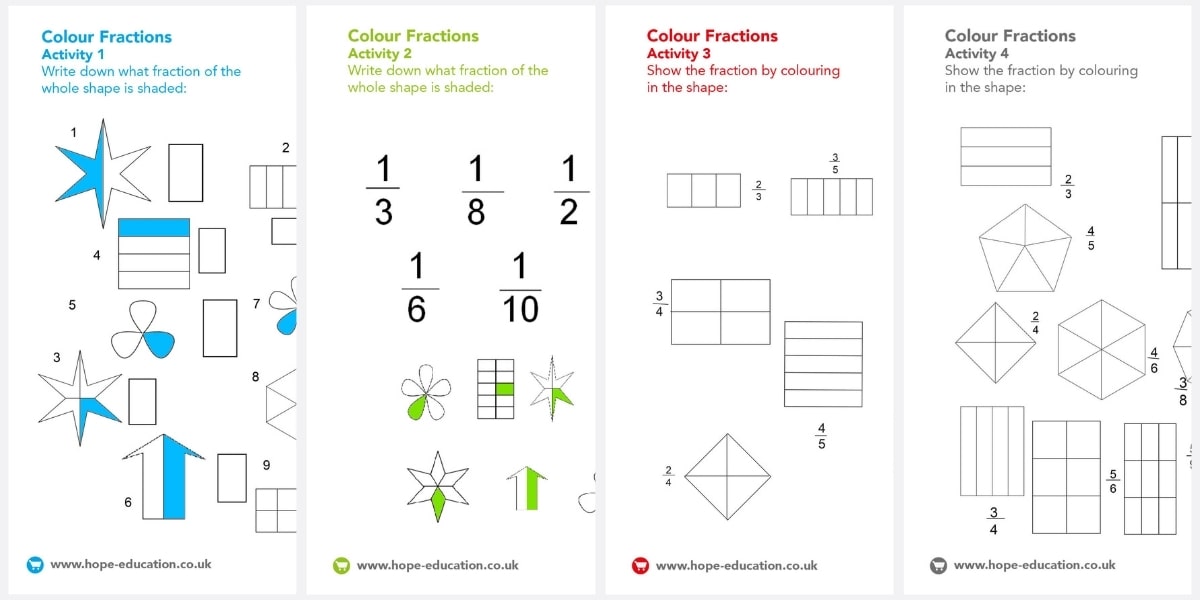Understanding fractions can be difficult for children without a simple, visual approach. Whilst this four-worksheet strong lesson resource is paper-based, it’s great to use your manipulatives for both KS1 & KS2 to bring the fractions to life.
Colour and shading fractions – a resource
Download these free colour and shading fractions worksheets to introduce your class to visualising fractions.
How can I use these shading fractions worksheet with my class?
This resource is perfect for introducing the idea of visualisation to fractions learning. This resource covers visualisation in a number of forms.
First, learners must recognise the portion of a fraction that is shaded and write it down. The resource that develops to challenge children to match the fraction with the correct coloured shape, and eventually shade in shapes to the desired fraction themselves.
Perfect either as an entire class activity or targeted for individual intervention for those struggling a little more, the resource is features a range of difficulties tiers to allow you to differentiate among the class. It can also be perfect for home learning or homework too.
By the end of the exercise, your class will have a greater grasp of fractions and better overall maths skills.
Why is visualisation of fractions important?
Proven to be an effective way of teaching mathematical concepts, tangible, physical representations of maths equations are a great way to enhance the teaching of maths. Used in KS1 or KS2, this colour fractions resource can be used in conjunction with maths manipulatives to enhance a key maths skill.
Why are shapes perfect for visualising fractions?
Shapes are a great way to visualise a mathematics concept like fractions as it allows learners to see a physical representation of fractions. On top of that, shapes are the perfect example due to the regularity and familiarity we have with them.
Shapes are fun and children engage them with them, and they appear all the time in everyday life. Cutting up a cake? This is the perfect life example of when you’re required to draw on your knowledge of shapes as fractions – which this resource is designed for.
